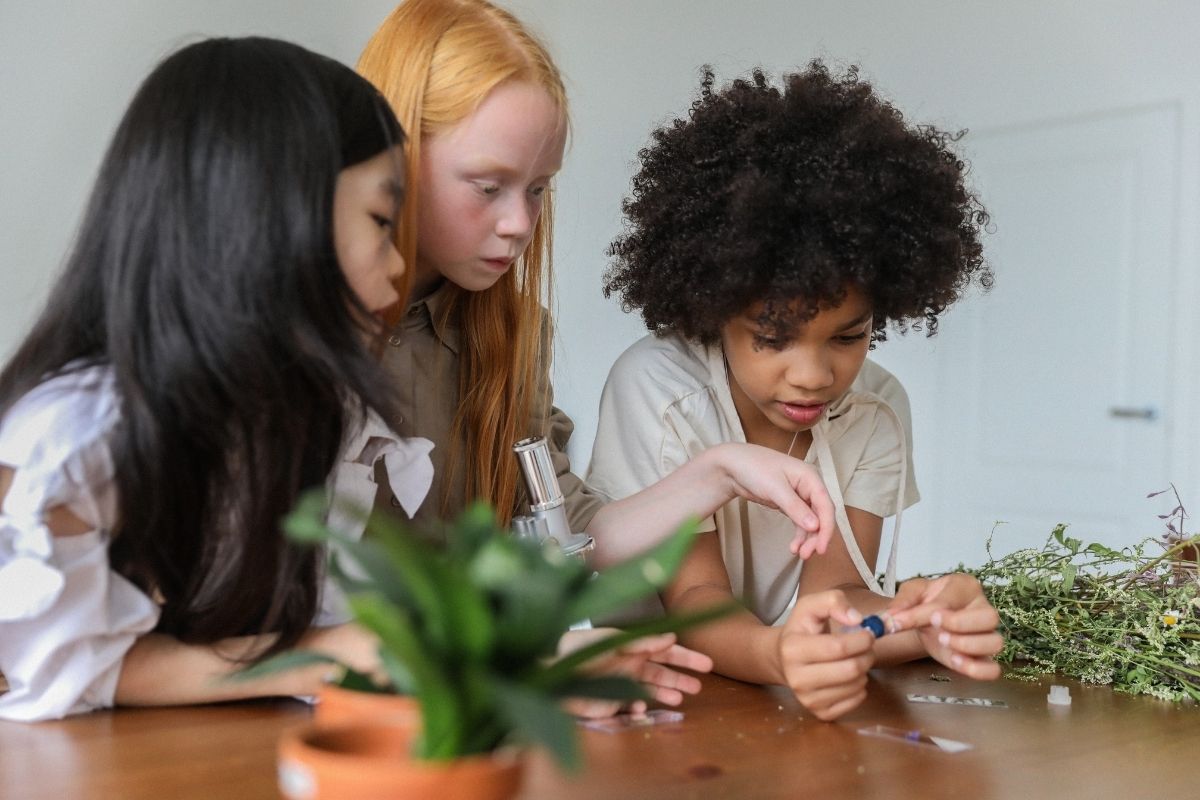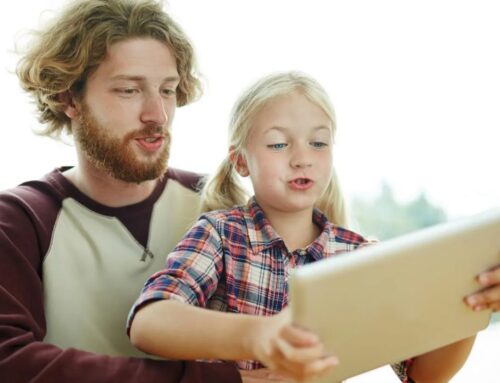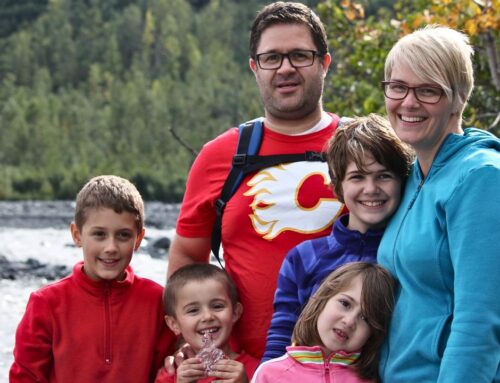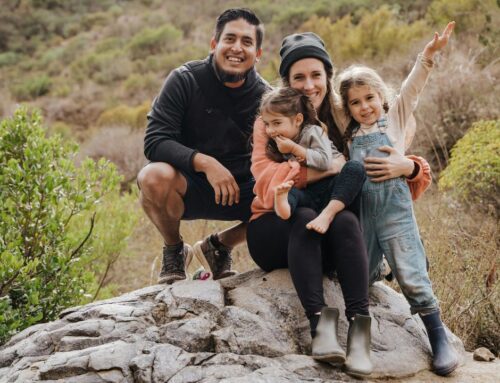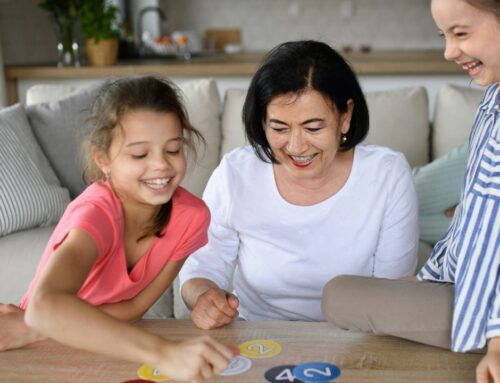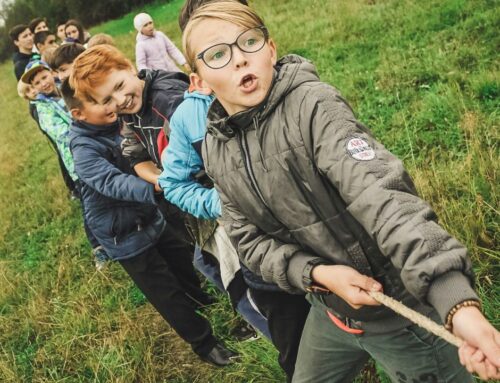At SelfDesign, our unique approach to learning places each child at the centre of their own learning experience.
“Our program requires learners to take ownership of their learning. It requires them to build a plan for themselves and think about how they’re going to achieve their plan,” says SelfDesign’s Chief Learning Officer Nikki Kenyon. “What’s unique about how we do that is that we actually allow the space and time for that to develop.”
Our learners direct the specifics of their own learning. Whether the child does this simply by following their interests and going about their day, observed by their parents or guardians, who pass along those observations and insights, or the child asks for resources to support their exploration of a specific interest or states a specific learning goal, the learning is personalized to that child.
Collaboration and support
Our learners are supported in shaping their learning by their family and by our B.C. certified educators. The relationship between learners and their parents or guardians is fundamental to the SelfDesign learning journey. It, combined with the relationship with the child’s learning consultant, is essential to helping ensure a child’s SelfDesign experience is successful.
“Our B.C. certified educators are there as guides, consulting to the learning and pointing towards possible paths or resources rather than imparting a one-size-fits-all curriculum,” says River Meyer, SelfDesign’s Director of Organizational Learning and Culture.
Our learners also interact with support providers such as music or dance instructors, athletics coaches, occupational therapists, psychologists, and assistants – many of whom are based in the child’s local community.
Each member of a child’s learning team is there to facilitate and support the child’s explorations of who they are, what their interests are, and their day-to-day experience of learning.
As the central member of their own learning team, a child’s willing collaboration in shaping the framework for their learning and reflecting on their experience is essential.
Active participation
That active participation begins when the child first is enrolled with SelfDesign Learning Community, and it continues throughout each learning year. At first, the child’s parent or guardian works closely with the learning consultant to shape the child’s learning plan, based on the parent or guardian’s knowledge and observations of the child’s interests, preferences and skills, and to observe and reflect on the learning that has taken place. As the child grows older and becomes more mature and capable, they gradually become more actively involved in the process of directing and shaping their learning.
Regardless of the learner’s age, the child and their interests, enthusiasms, learning styles, abilities and goals drive the collaboration and the learning.
To help learners and families better understand a SelfDesign learner’s responsibilities, we outline the roles and expectations for our learners here.
The role of the learner in SelfDesign Learning Community
A SelfDesign learner collaborates with their educator and their parents or guardians to help develop a personalized learning plan.
Learners contribute to this important process by providing their parents or guardians and learning consultant with insights into their passions, interests, learning styles, work habits, and their goals.
To do this, younger learners may interact more with their parents or guardians than with the learning consultant.
For example, the learner may indicate to their parents or guardians how they prefer to spend their time, what they like to do, and what new interests and activities have captured their attention. In some cases, the parents or guardians may simply observe their child going about their day, noting what sparks the child’s wonder and enthusiasm, how they approach new experiences, how they work or solve problems, and what they seek from their explorations.
As the learner becomes older and matures, they are encouraged to interact directly with the learning consultant more often. They gradually take on a more active role in shaping their personalized learning plan by recognizing and communicating how they prefer to learn, what they want to learn about, and how they want to go about it.
A SelfDesign learner regularly reflects on their learning, and communicates weekly with their learning consultant to discuss progress and needs.
Young learners might work with or through a parent or guardian to provide our weekly Observing for Learning communications.
As a learner grows, we encourage them to discuss their own weekly reflections into their own learning with their learning consultant.
A SelfDesign learner informs their learning consultant of resources and services they wish to include in their learning.
This includes both resources and services the learner has successfully used in the past and those they’d prefer to explore during the current learning year. There are many possibilities: lessons in the community (e.g., music or swimming lessons or soccer practice), access to a community recreation centre or arts studio, or resources such as learning experiences from SelfDesign’s Learning Experience Library or resources found in the learner’s local community.
Younger learners may indicate their preferences to their parent or guardian, who then shares that insight with the learning consultant. The parent or guardian may also observe the learner’s level of interest in a particular topic, resource or activity, touch base with the learner, and share the outcome with the learning consultant.
As learners become older, depending on their age and comfort level, they may inform their learning consultants themselves or continue working with their parents or guardians to share those preferences. By the time the learner begins our grade 10 to 12 program, they may be regularly communicating their preferences directly to their learning consultant.
A SelfDesign learner requests changes to their own annual learning plan.
We encourage each learner to request adjustments to their learner plan to help the learner explore new or emerging interests or to delve more deeply into a newfound passion. We also invite learners to request the addition of specific activities and events such as workshops, classes, and field trips, and of new resources and services, to their learning throughout the year.
Again, younger learners need only share their preferences with their parents or guardians, who will request the changes, but we encourage our older learners to engage more actively in shaping and adjusting the specifics of their learning plans.
~
By focusing learning plans on each learner’s interests and preferences, SelfDesign helps to ensure each learner remains at the centre of their own learning journey.
~
Over the next few months, we will outline and explore the responsibilities of other members of a learner’s core learning team. Please check back to learn more about the roles of a SelfDesign parent or guardian, a learning consultant, and a support provider.
Learn more about these other key aspects of SelfDesign Learning Community:
Our learner-centred approach to learning

